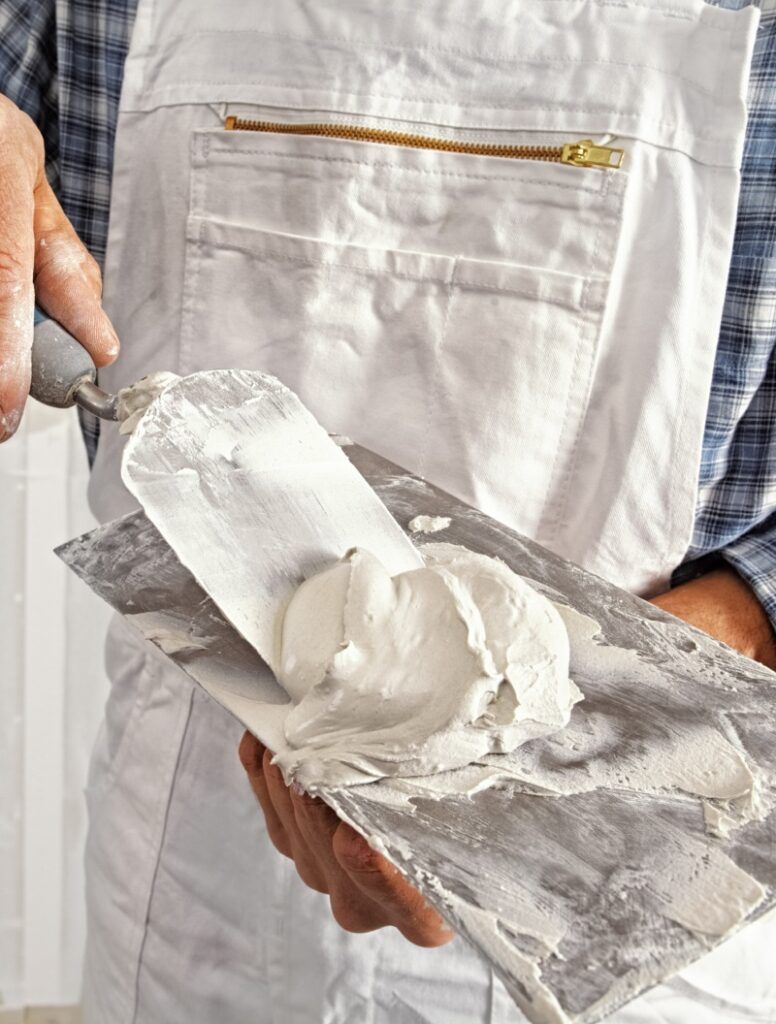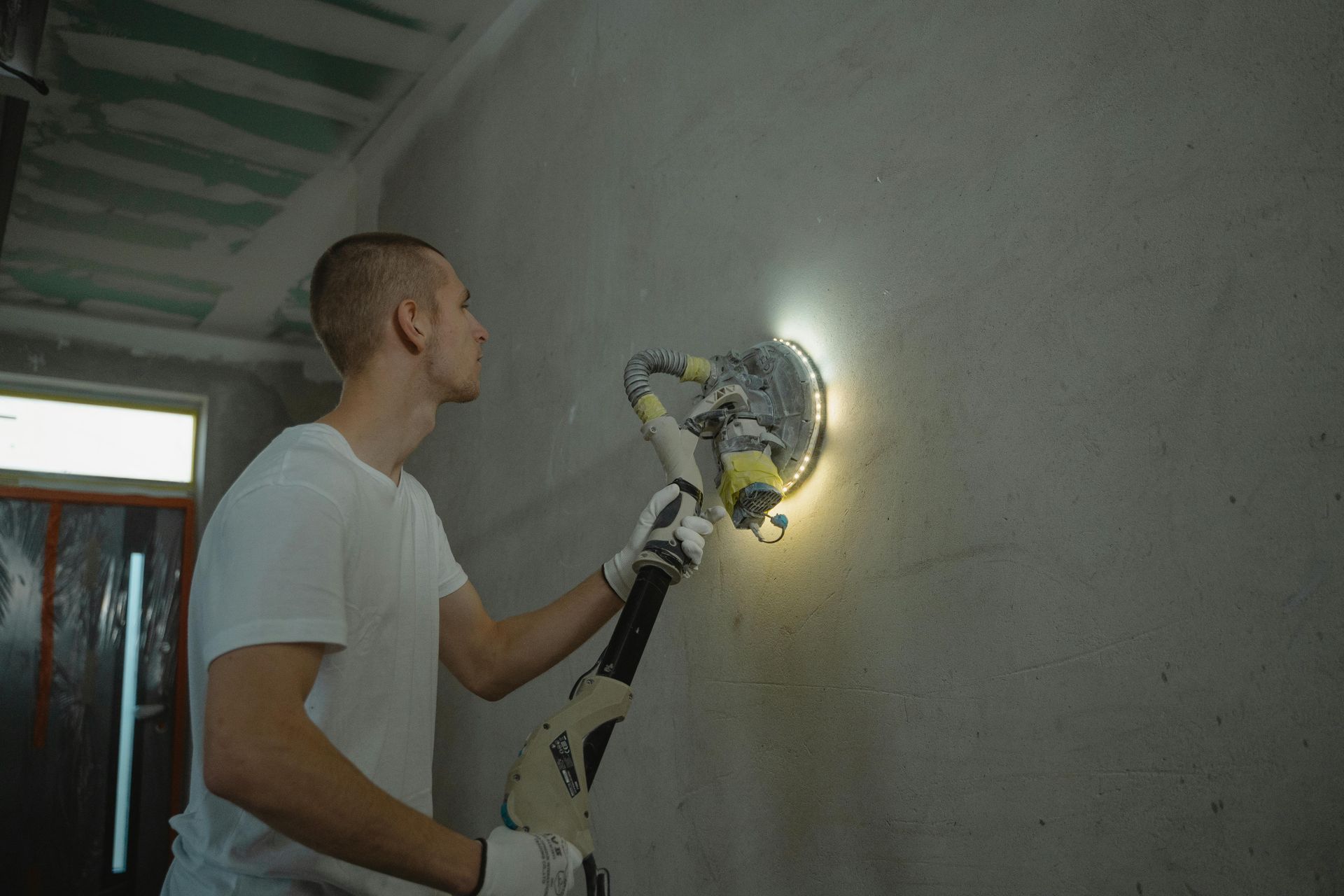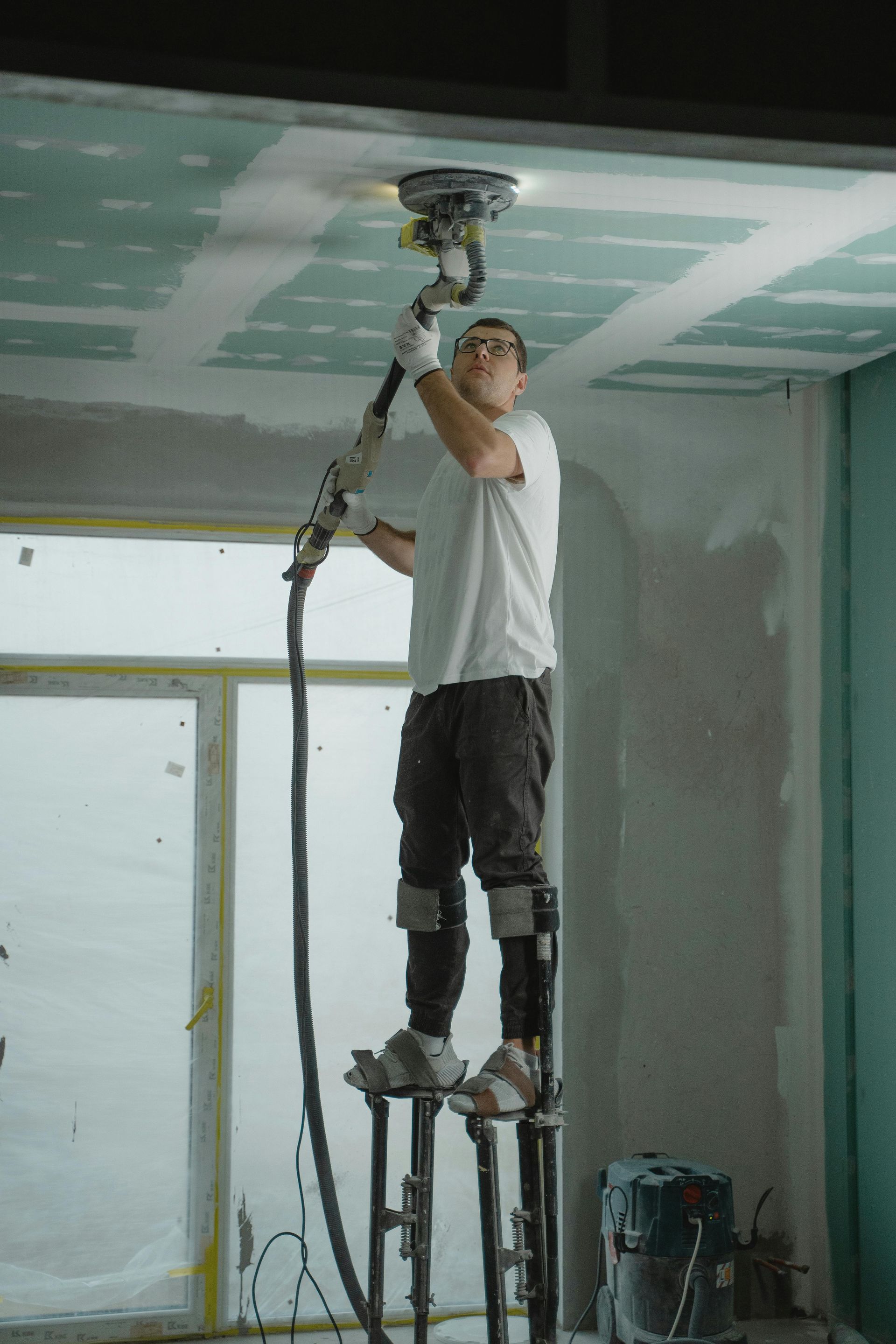
Sheetrock vs Drywall: Understanding the Basics
If you’ve ever been slightly confused while picking materials for a home project, you're not alone.
"Sheetrock" and "drywall" are terms that often pop up and can be a bit confusing.
Though they sound different, the two are more alike than you might think, and understanding this can really help with your construction or remodeling plans.
Whether you're a DIY enthusiast taking on a home renovation or a professional builder, knowing your materials inside out is key.
Keep reading to know what exactly sheetrock and drywall are, how they’re used, and why knowing the difference (or lack thereof) matters for your projects.
What is Drywall?
Drywall is a common building material used primarily for constructing walls and ceilings in buildings. Made from gypsum plaster, which is pressed between two thick sheets of paper, drywall is known for its quick installation and relatively low cost. It first gained popularity in the building industry because it's much quicker to install than traditional plaster, which requires more skill and time.
Drywall comes in various thicknesses and sizes, making it adaptable for different needs. It's especially favored in residential and commercial construction for its effectiveness in creating smooth surfaces that are easy to paint or wallpaper over.
Now, let’s clear up a common mix-up: drywall is essentially the same thing as sheetrock. The term “sheetrock” is actually a brand name that has become so widely used it's often used to refer to generic drywall. This is similar to how people refer to all tissues as "Kleenex" even though Kleenex is just one brand of tissues. So when we talk about drywall or sheetrock, we’re essentially discussing the same material, just under different names.
What is Sheetrock?
Sheetrock is a brand name for drywall made by the US Gypsum Company, one of the leading drywall suppliers in the country. While Sheetrock is technically just a brand of drywall, the name is often used synonymously with drywall by both professionals and DIYers alike, thanks to its strong market presence.
What sets Sheetrock apart from other drywall brands is its quality and the variety of specific products it offers. For instance, Sheetrock comes in fire-resistant versions, moisture-resistant versions, and even versions designed for soundproofing. These specialized options provide solutions for various building requirements, making Sheetrock a go-to choice for projects that need a little extra consideration in terms of safety and environment.
Despite these variations, the core material remains the same: gypsum plaster between paper lining. The process of installing Sheetrock is identical to other drywall brands, involving measuring, cutting, and fastening the panels to the framework of a building, then finishing with tape and joint compound to smooth over the seams.
Understanding that Sheetrock is a brand helps clarify shopping choices and ensures that you are not misled by branding versus the actual qualities of the material. Next, we'll explore the differences and details more closely to help you better understand when and why you might choose one product over another.
Key Differences Between Sheetrock and Drywall
Although we've established that Sheetrock is essentially a brand name for drywall, it's worth exploring the perceived differences because they might influence your purchasing decision. Here’s what you need to keep in mind:
- Brand Recognition: Sheetrock is to drywall what Hoover is to vacuum cleaners—a brand that has become synonymous with the product itself due to its longstanding reputation and market penetration. When you buy Sheetrock, you're often paying a bit more for the brand's reputation for quality and reliability.
- Product Varieties: Sheetrock offers specific types of drywall that cater to different needs, such as moisture resistance, fire resistance, and sound dampening. While generic drywall can also come with these features, Sheetrock brands these products under specific names and ensures consistent quality, which can be a crucial factor for professional builders.
- Availability: Sheetrock might be more readily available in some areas than other brands of drywall, making it a more convenient option for quick purchases or when specific types of drywall are needed on short notice.
Despite these differences, the fundamental composition and use of Sheetrock and generic drywall remain the same. Choosing between Sheetrock and other drywall brands often comes down to personal preference, availability, or specific project requirements.
Cost Comparison
When planning a construction or renovation project, budget often plays a crucial role in deciding materials. Let's break down the cost comparison between Sheetrock and generic drywall to help you understand where you might save or spend a bit more.
- General Pricing: Generally, basic drywall is one of the most cost-effective solutions for wall and ceiling coverings. It offers a good balance between price and performance, making it a popular choice for various types of construction projects.
- Sheetrock Branding: Sheetrock, being a well-known brand, may come at a slightly higher price point than generic drywall. This is often due to the perceived quality and the additional features it offers, like enhanced fire resistance or moisture protection.
- Special Features Costs: Both Sheetrock and other drywall brands offer special features such as moisture resistance or fireproofing. These specialized versions are more expensive than regular drywall. For instance, moisture-resistant drywall is typically more costly but necessary in areas prone to dampness like bathrooms and basements.
- Bulk Buying: Costs can also vary depending on how much material you buy and where you buy it from. Bulk purchases often come with discounts, and prices can vary significantly between different suppliers and regions.
When considering the costs, it's not just about the price tag. Think about the long-term benefits of choosing a slightly more expensive option that might offer better performance where you need it. For example, investing in moisture-resistant Sheetrock for a basement can prevent future mold problems, saving money on potential repairs.
Common Uses and Applications
Drywall and Sheetrock are versatile materials widely used in both residential and commercial construction. Here's a look at their common applications and some specific scenarios where one might be preferred over the other:
General Construction
Both Sheetrock and generic drywall are staples in constructing walls and ceilings. They provide a smooth, paintable surface that is fundamental to interior finishing. They're ideal for creating partitions in homes and offices, allowing for quick and easy space division.
Moisture-Prone Areas
What is All Purpose Sheetrock Used For?
All-purpose Sheetrock is designed to be versatile, suitable for most standard drywall applications including walls and ceilings in living rooms, bedrooms, and offices. However, for areas like bathrooms and basements where moisture is a concern, moisture-resistant Sheetrock or drywall is recommended. This type helps prevent the growth of mold and mildew, ensuring durability in damp conditions.
Fire Safety Concerns
Fire-resistant types of Sheetrock and drywall are crucial in areas where building codes require materials that help contain and slow the spread of fire. These are typically used in garages, kitchens, and near mechanical rooms.
Soundproofing
In settings where noise reduction is important, such as in apartments, hotels, and offices, sound-dampening drywall or Sheetrock can provide an additional layer of privacy and comfort. These specialized panels are engineered to reduce the transmission of sound between rooms or units.
High Traffic Areas
In places where walls are subject to more wear and tear, such as hallways and schools, more durable forms of drywall or Sheetrock, like those with impact resistance, are beneficial to withstand bumps and knocks.
Each type of Sheetrock and drywall serves a specific function that can enhance the safety, comfort, and utility of a space. Choosing the right type based on your specific needs can lead to better outcomes in terms of functionality and longevity.
Is Sheetrock Waterproof?
A common question when planning renovations or constructions in moisture-prone areas is whether Sheetrock is waterproof. Understanding the capabilities of Sheetrock in these conditions is crucial for making the right material choices.
Moisture Resistance vs. Waterproofing
It's important to clarify that while Sheetrock offers moisture-resistant products, these are not completely waterproof. Moisture-resistant Sheetrock, often referred to as green board due to its distinctive green paper facing, is designed to withstand exposure to moisture better than standard drywall. However, it's not suitable for environments where it will be in direct contact with water, like shower walls or exterior spaces.
Applications of Moisture-Resistant Sheetrock
Moisture-resistant Sheetrock is ideal for areas that may experience periodic humidity or indirect moisture, such as bathrooms without direct water spray, basement walls, and kitchen backsplashes. This type of Sheetrock helps prevent the growth of mold and mildew, which are common issues in damp areas.
Limitations
For areas with direct water exposure, such as shower enclosures or outdoor kitchens, a more robust solution like cement board or specialized waterproof panels is necessary. These materials are designed to handle direct water contact without deteriorating or fostering mold growth.
Recommendations
When using moisture-resistant Sheetrock, it's also advisable to implement good ventilation systems and use waterproof finishes to enhance moisture protection. Ensuring that the installation includes proper sealing and moisture barriers can extend the lifespan of the walls and prevent potential water damage.
Understanding the difference between moisture-resistant and waterproof can help you choose the right Sheetrock product for your project's specific needs. By selecting the appropriate type and taking additional protective measures, you can maintain the integrity and appearance of your space effectively.
Why is it Called Sheetrock?
The name "Sheetrock" has become synonymous with drywall, but have you ever wondered why this particular brand of gypsum panel is called Sheetrock?
Sheetrock is a trademark name that originated from the US Gypsum Company, one of the first companies to produce drywall panels. The name was registered as a trademark in the early 20th century when the company started to market their newly developed product.
The term "Sheetrock" was a marketing strategy designed to differentiate the product in the construction industry. The "sheet" in Sheetrock refers to the large, flat sheets in which the gypsum panels are made, while "rock" hints at the durability and solidity of the gypsum plaster.
Over time, Sheetrock gained popularity for its quality and ease of use, eventually becoming a leading brand in the drywall industry. Its widespread use led to the name becoming a generic term for drywall, similar to how "Kleenex" is used for tissues or "Coke" for cola.
Making the Right Choice for Your Project
When it comes to choosing between Sheetrock and generic drywall, understanding your project's specific requirements is key. Here's how you can make an informed decision:
Assess the Needs of Your Project
Consider the environment where the drywall will be installed. Are there high moisture levels, fire hazards, or noise concerns? Matching the drywall type to the environmental conditions ensures durability and functionality.
Compare Costs and Benefits
Weigh the cost differences between Sheetrock and generic drywall against the benefits each offers. While Sheetrock may be slightly more expensive, its specialized options like fire-resistant or moisture-resistant boards might provide long-term savings and safety benefits that justify the initial investment.
Availability and Convenience
Check the availability of Sheetrock and other drywall brands in your area. Sometimes, the choice may come down to what’s readily available at your local suppliers. Also, consider the lead times for delivery and whether they align with your project timeline.
Consult with Professionals
If you're unsure, talking to a construction professional or a contractor who has experience with both materials can provide valuable insights. They can offer advice based on your project's specifics and their own experiences with the products.
Environmental Considerations
Think about the sustainability practices of the brand you choose. Some brands, including Sheetrock, have initiatives in place to reduce environmental impact, which might align better with your values or the regulatory requirements of your project.
Trial and Application
If possible, test small sections with both Sheetrock and generic drywall to see how they perform under the specific conditions of your project. This hands-on approach can be particularly useful for large-scale or sensitive projects.
The Bottom Line
Understanding the difference between Sheetrock and drywall, though subtle, is crucial for anyone involved in building or renovating. Both materials offer unique benefits, and choosing the right one can affect the cost, efficiency, and outcome of your project. Remember, the right material depends not just on your budget but also on specific project needs like moisture resistance, soundproofing, and fire safety. Armed with the insights from this guide, you’re better equipped to make informed decisions that ensure durability, safety, and aesthetic appeal in your construction or renovation projects.
Call to Action
Ready to take your project from planning to perfection?
Whether you're patching a small hole, remodeling an entire room, or building from scratch, the experts at Patch Boys of South Central PA are here to help.
Specializing in drywall services, skim coating, ceiling repair, patching, and installation and framing, we've got you covered. Serving areas from Harrisburg to Chambersburg, including Hershey, Gettysburg, Lancaster, York, Reading, and beyond, our team is dedicated to delivering top-quality service right where you need it.
Don’t just take our word for it, let us show you why homeowners and builders trust Patch Boys for their most critical projects.
Contact us today and ensure your walls are in the hands of professionals. Let's make your space something special together










